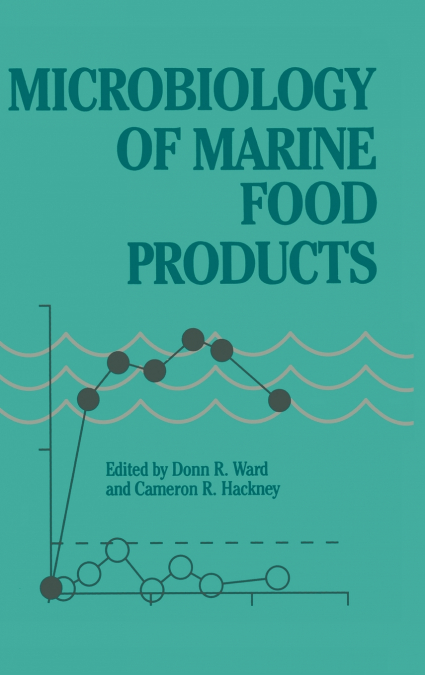
Cameron A. Hackney / Donn R. Ward
1 Seafood Quality.- 1. Microbiology of Finfish and Finfish Processing.- Harvesting and Onboard Handling.- Fishing Vessel Sanitation.- Processing.- Preservatives.- References.- 2. Microbiology of Bivalve Molluscan Shellfish.- Biology of the Bivalves.- Public Health Concerns.- Microflora of Bivalves at Harvest.- Shellstock Harvesting and Handling.- Bivalve Processing.- Heat Processing.- Indicators of Spoilage.- Summary.- References.- 3. Microbiology of Crustacea Processing: Crabs.- Harvest and Utilization.- Microbiological Flora.- Processing and Microbiological Quality Control.- Summary.- References.- 4. Microbiology of Crustacean Processing: Shrimp, Crawfish, and Prawns.- Naturally Occurring Microflofa.- Yeasts, Molds, Fungi, and Viruses.- Microbiological Changes Through the Distribution System.- Microorganisms Associated with Seafood Spoilage.- Microorganisms of Public Health Concern.- Effect of Freezing on Micororganisms.- Retail Handling Procedures.- Simulated Retail Procedures.- Ice-Only Service Cases.- Refrigerated Display Case.- Retail Display Summary.- References.- 5. Microbiology of Mince, Surimi, and Value-Added Seafoods.- Mince.- Surimi.- Value-Added Seafoods.- General Microbiological Aspects of Mince, Surimi, and Value-Added Products.- References.- 6. U.S. Seafood Inspection and HACCP.- Food and Drug Administration (FDA).- U.S. Department of Commerce (USDC).- U.S. Department of Agriculture (USDA).- U.S. Environmental Protection Agency (EPA).- Department of Defense (DOD).- State Seafood Inspection Activities.- Inspection Approaches.- What Is HACCP?.- How Is HACCP Applied?.- HACCP Beyond Microbiology.- HACCP Applications to Marine Food Products.- HACCP Sampling Procedures.- Appendix: Glossary of Terms.- References.- 2 Seafood Safety.- 7. Indicators and Alternate Indicators of Growing Water Quality.- Historical Perspectives.- Emerging Environmental Issues That Question Basic Assumptions.- Sources and Composition of Indicator Organisms in Shellfish Growing Waters.- Influence of the Estuarine-Marine Environment on the Fate of Allochthonous Indicators of Fecal Contamination.- Indicator Systems.- Concluding Remarks.- References.- 8. Viruses in Seafoods.- Families of Human Enteric Viruses Associated with Pollution of Marine Waters with Human Feces.- Human Enteric Viral Pathogens Associated with Processing Distribution and Preparation of Seafoods.- Summary of Reported Seafood-Associated Viral Disease Outbreaks 1973-1987.- References.- 9. Seafood-Transmitted Zoonoses in the United States: The Fishes, the Dishes, and the Worms.- Cestodes.- Digeneans.- Nematodes.- Acanthocephalans.- Other Metazoan Agents.- Risks.- Aquaculture and Parasites.- Prevention of Human Infections.- Public Education.- Acknowledgments.- References.- 10. Nonindigenous Bacterial Pathogens.- Open Water Harvest and Pollution.- Pollution and Aquaculture Systems.- Relative Incidence of Enterics in Seafood Illness.- Clostridium botulinum.- Listeria monocytogenes.- Staphylococcus aureus.- Salmonella.- Shigella.- Conclusions.- References.- 11. Indigenous Pathogens: Vibrionaceae.- Vibrio.- Aeromonas.- Plesiomonas.- Summary.- References.- 12. Natural Toxins.- The Known Seafood Toxin Syndromes.- Management.- Summary.- Acknowledgments.- References.- 13. Scombroid Poisoning.- Clinical Aspects.- Epidemiology of Scombroid Fish Poisoning.- Formation of Histamine in Fish.- Histamine Toxicity.- Analysis of Histamine in Fish.- Histamine Regulation (U.S.).- References.- 3 Special Processing and Packaging.- 14. Principles of Pasteurization and Minimally Processed Seafoods.- Pasteurization.- Minimally Processed Seafoods (Sous Vide Seafood Products).- Effect of Container Type.- Common Problems.- Concept of Microbial Survivors in a Batch.- Use of Steam Tunnel Processes to Reduce Microbial Levels.- Clostridium botulinum Type E.- Appendix: Explanation of Terms.- References.- 15. Modified Atmosphere Packaging.- Proposed Mechanisms of Action.- MAP Storage and Gutted Fish.- Studies...